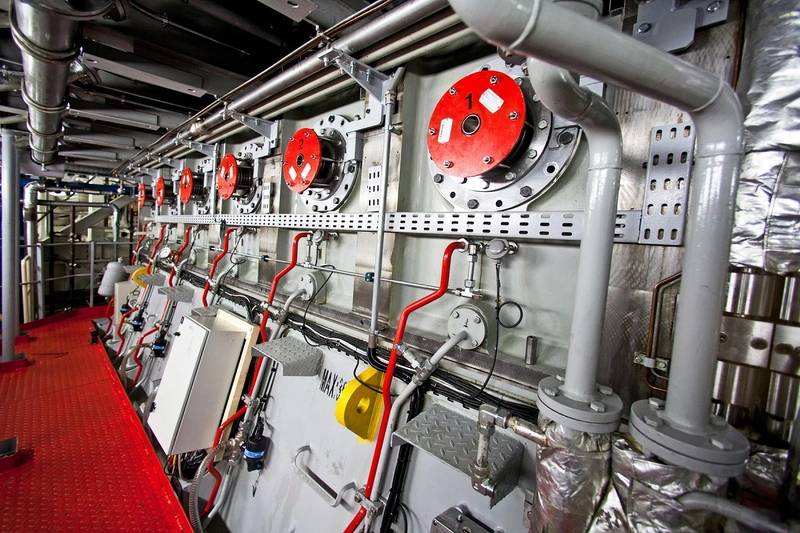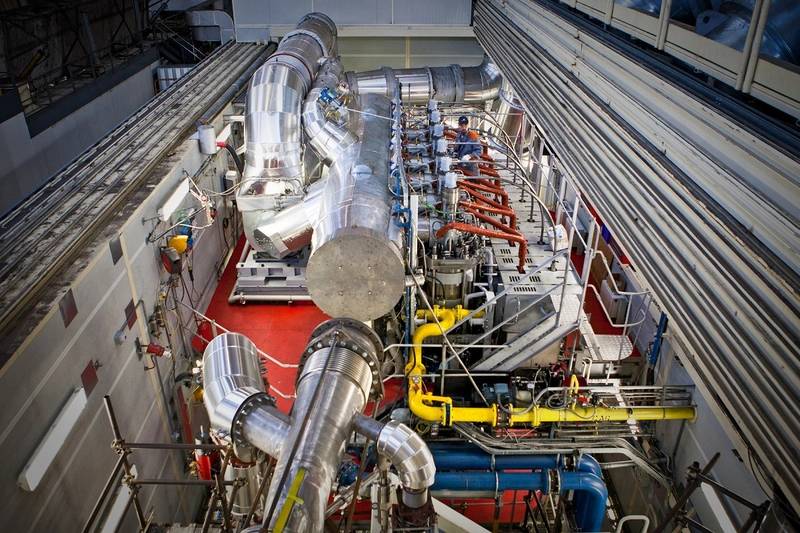Wärtsilä to Launch Dual-fuel Engine Series
Wärtsilä successfully conducted full scale testing on gas of its low-speed two-stroke dual-fuel engine and is now introducing a full new range of engines based on its established and well-proven low pressure technology. The first engine utilizing this technology, the Wärtsilä RT-flex50DF, will be available for delivery in the third quarter of 2014. Other engines from the company's new Generation X series will follow and will be available for delivery during 2015 and 2016.
The entire portfolio of Wärtsilä two-stroke engines will be available as low pressure dual-fuel (DF) versions. Studies show that Wärtsilä's low pressure DF engines offer capital expenditure (CAPEX) reductions of 15-20%. This is achieved through a substantially simpler and lower cost LNG and gas handling system operating at pressures below 10 bar, and by the fact that no further exhaust gas cleaning systems are needed to meet future emission regulations. The new engines are IMO Tier III emissions compliant in gas mode, and the minimum Tier II level is achieved with liquid fuel.
Furthermore, on the operating expenditure (OPEX) side, significant gains will be achieved with Wärtsilä's technology, the manufacturer said. This is because no high pressure gas compression system external to the engine needs to be operated onboard the vessel, and NOx abatement systems are not required. Another main advantage is that the Wärtsilä technology allows stable operation on gas across the entire load range. This means that at low loads, there is no need to switch to diesel fuel as is the case with other technologies. Moreover, the consumption of pilot fuel is approximately just one per cent of the total fuel amount, and therefore much lower than with other technologies.
Wärtsilä's low pressure gas system fulfils all safety requirements. Since low pressure gas technology is the standard for all four-stroke engine makers today, the merit of this concept is clearly proven.
"The benefits of the new low pressure dual-fuel technology for two-stroke engines are significant. Describing this as a game-changing development for merchant shipping is certainly no exaggeration, since the many advantages of being able to use gas and LNG as primary fuel are now, for the first time ever, available to virtually all vessel types. Our well proven technologies for both the engines and the onboard gas and LNG handling systems, can now be applied to this wider market. With the adaption of low pressure dual-fuel technology to two-stroke engines, Wärtsilä brings the proven advantages it has demonstrated in the four-stroke, medium-speed DF engine market to its two-stroke low speed engine customers," said Mr. Martin Wernli, Vice President, two-stroke, Wärtsilä Ship Power.
Wärtsilä said its R&D work has focused heavily dual-fuel engine technology throughout the years. Wärtsilä introduced its low pressure dual-fuel engine technology for four-stroke engines for land based applications in the 1990s, and for marine applications soon afterwards. Since then, the company has delivered more than 1,000 such dual-fuel engines accumulating more than 7 million running hours.
The application of natural gas as a widely accepted fuel for merchant shipping is likely to become a reality in the near future. The environmental benefits and attractive pricing that gas offers are expected to drive demand, with a resulting increase in market share for gas fuel. By introducing low pressure two-stroke DF engine technology, Wärtsilä is accelerating this major trend since it makes the application of gas as a marine fuel easier and safer for owners, operators and yards. Wärtsilä envisages that by 2020, more than a quarter of the ordered vessels could be designed to run on gas fuel.
Wärtsilä is currently in the process of finalizing the documentation for the first of the new series of engines, the Wärtsilä RT-flex50DF. Preparations for Classification Society approvals are underway.
wartsila.com


